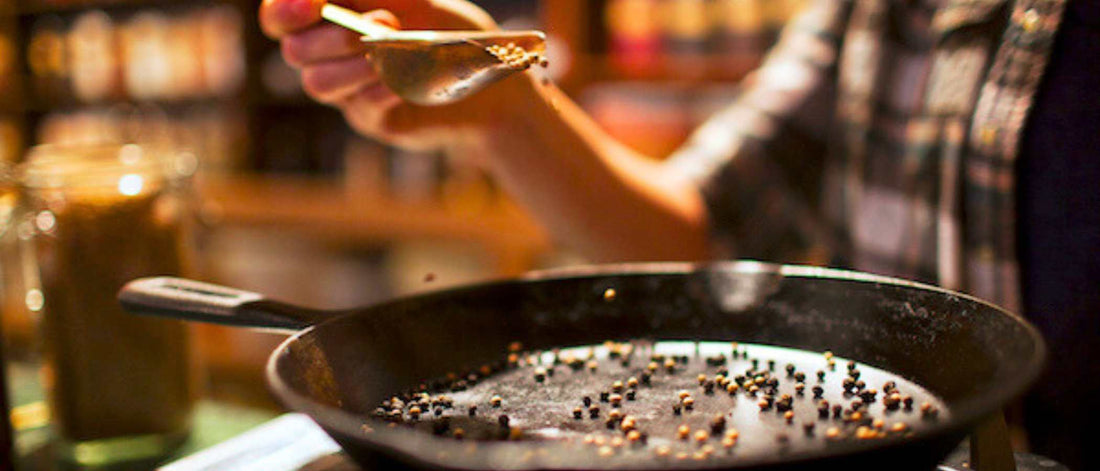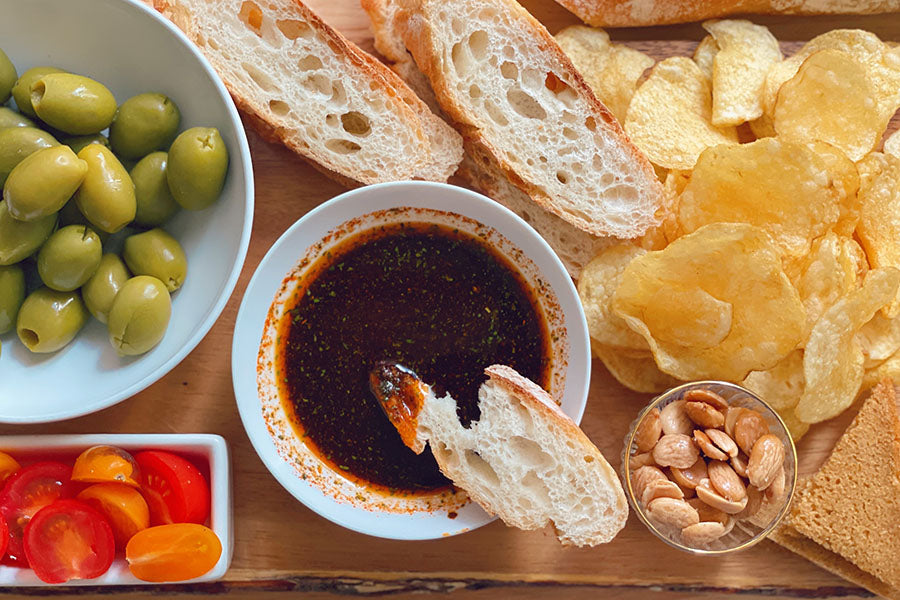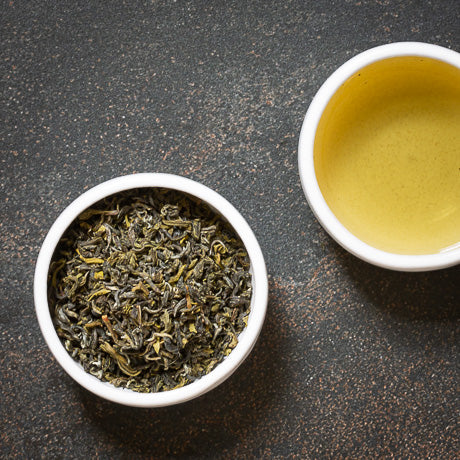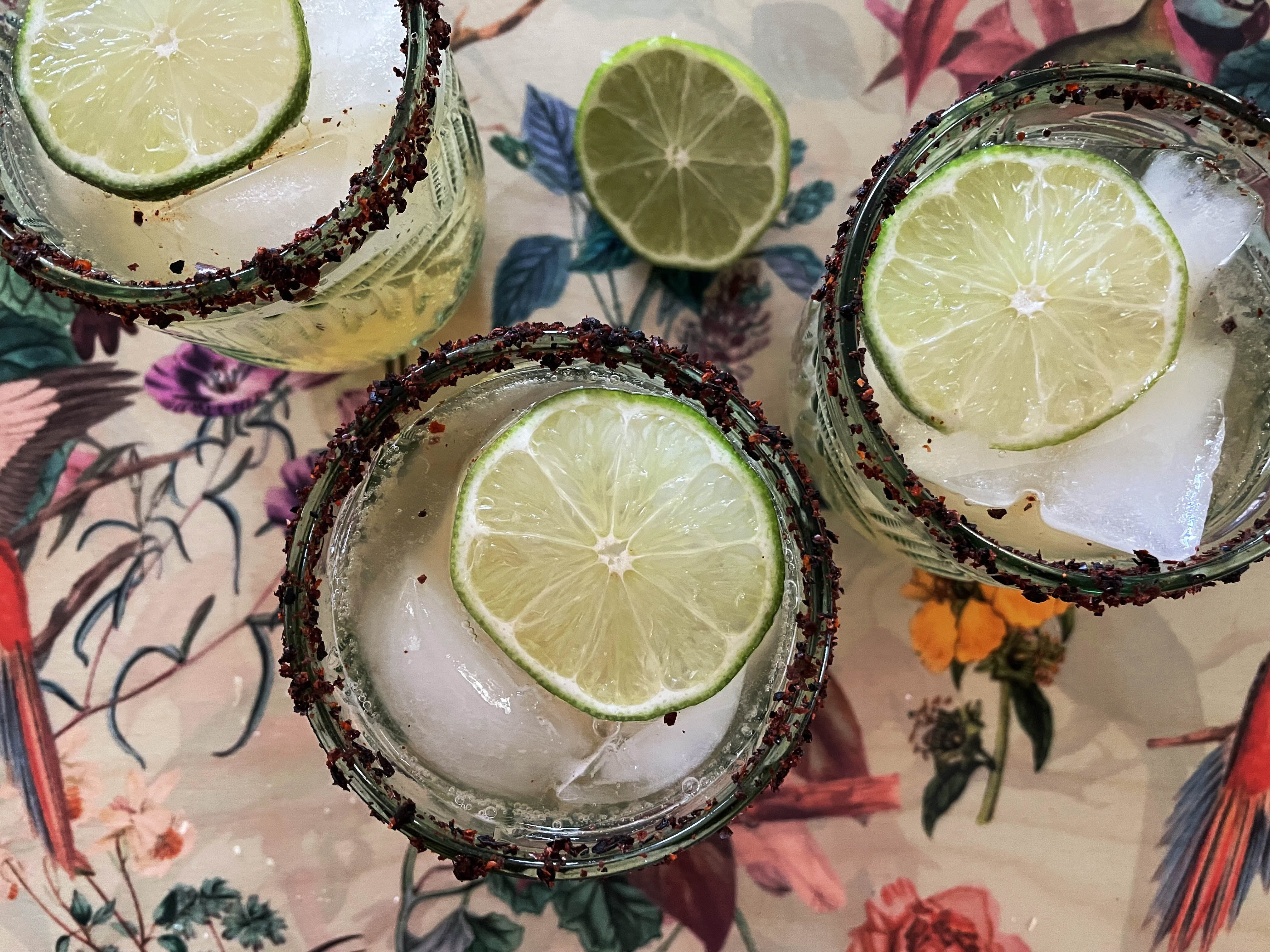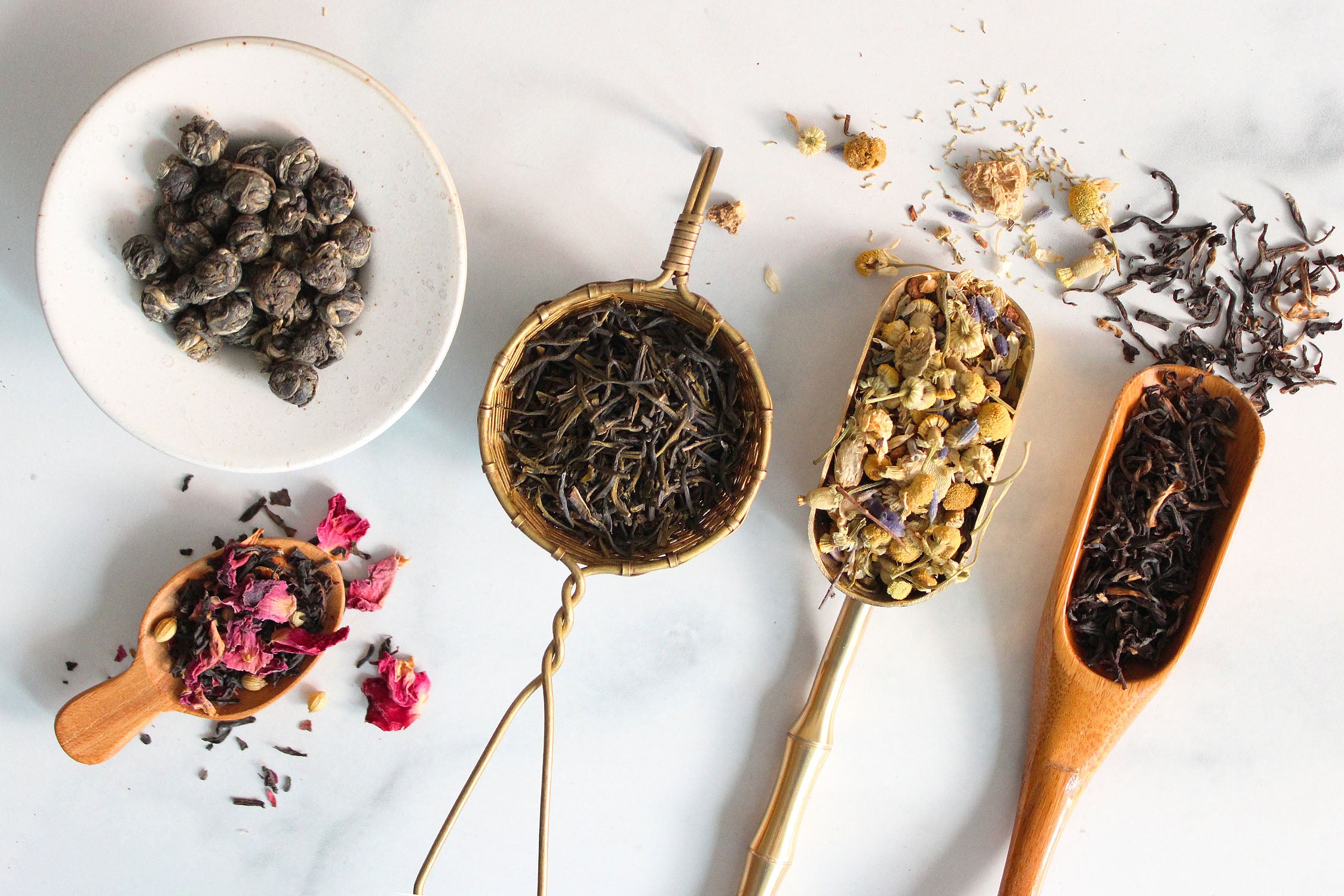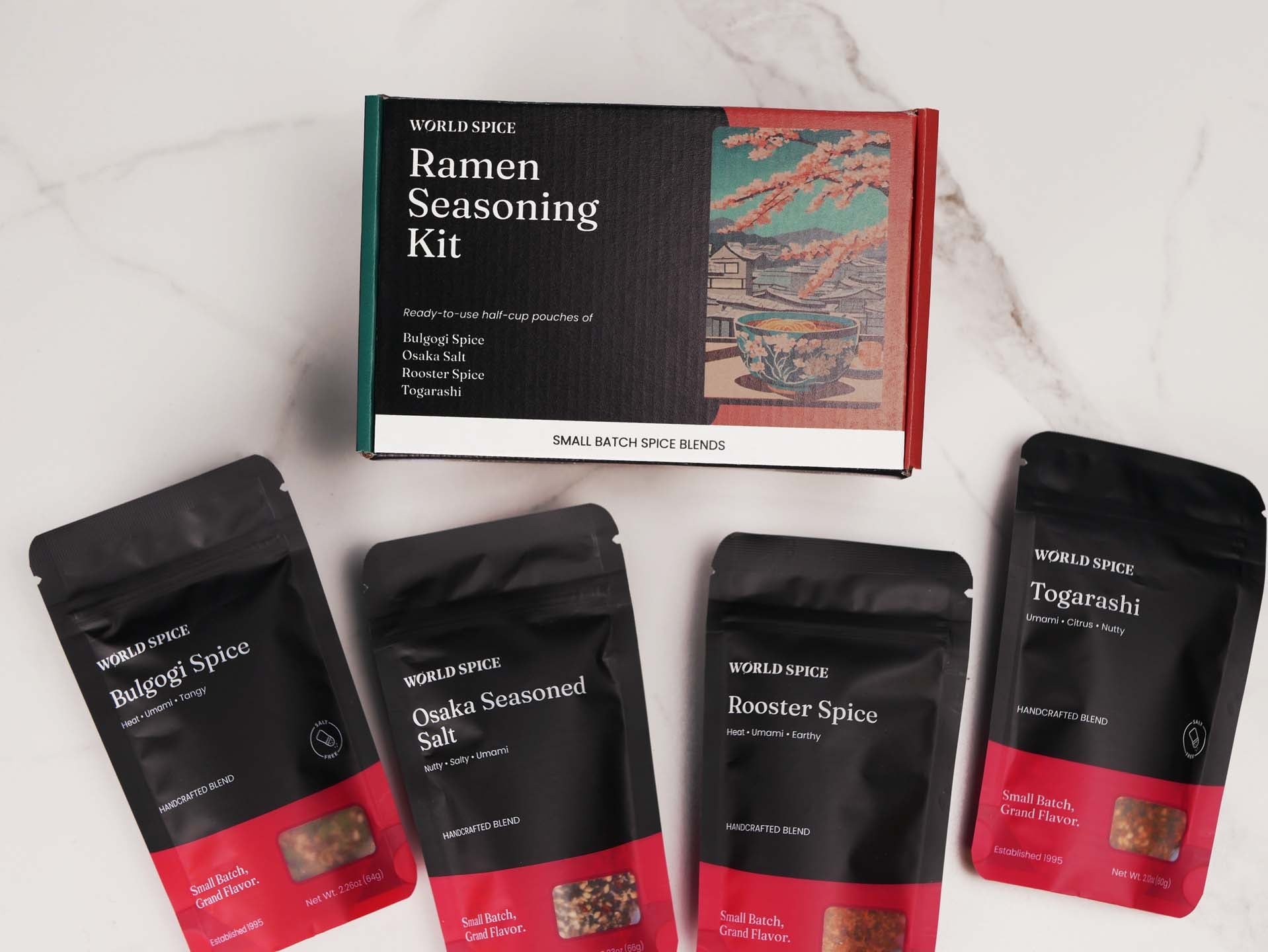Cooking Guides & Tips
Why We Only Carry Loose Leaf Tea
When it comes to tea, we like to let it all hang out. Loose leaf tea has big advantages over bagged blends — from flavor to freshness to full-on tea joy. Here’s why we’re all in. In order to go through the mechanical process of being packaged into bags, tea leaves must be cut into small pieces so they can move through the machinery. Just like ground spices, these tea leaves become stale more quickly and lose flavor faster than if they are left whole. But Really, What's in the Bag? Well ... stems, stalks, and a whole lot of dust.The process of crushing or cutting the tea leaves can also reduce the amount of good-for-you natural compounds that are the reason many people choose to start drinking tea in the first place. Sourcing loose, whole-leaf teas allows us to keep an eye on the quality of our teas, and pass on a product that we’re proud of. When tea isn’t cut finely and hidden away in a bag, everyone can see, smell, and taste the difference. Loosen Up Already! Loose leaf tea means that you have more control over your brewing experience. Some people like very strong tea, some prefer light and mild tea. With teabags you’re stuck with pre-measured amounts, but with loose leaf you can adjust to your perfect cup. How To: Loose Leaf Made Easy If you want to stick with teabags, cool. But ditching them is easier than you think. Every pouch of our loose-leaf tea includes simple brewing instructions — right on the label — so you’ll know exactly how much to use and how long to steep. Whether you're a first-time sipper or a daily tea devotee, we’ve got the tools to help, including our staff-favorite heat-and-steep kettle for the perfect cup and a soothing daily ritual. Ready to brew? Check out our favorite brewing wares!
Learn moreTea Talk: All About Tisanes AKA Herbal Teas
We've written about the world of true teas already (if you missed it, it's a must-read!), but for a quick refresher: true teas come from the plant Camellia sinensis and include Black, Oolong, and Green. Today, let's introduce tea’s cool hippy aunt: the tisane. You might not have been formally introduced, but trust us — you’ve definitely met. Also known as herbal tea, tisanes are made from the leaves, bark, roots, flowers, or fruit of a stunningly wide variety of plants. If you brew it like tea but it’s not Camellia sinensis, it’s a tisane. Chamomile, Peppermint, and Ginger are some of the most popular tisanes, but that’s just the start of a wildly flavorful journey of brewable herbs and spices. Pick Your Potion: Tisanes for Every Mood We carry standalones like tangy Hibiscus, sunny Lemongrass, and floral Chrysanthemum as well as house-crafted blends like zesty Copper Lemon and sweet, earthy Mystic Licorice. If you're craving the body and flavor of true tea, minus the caffeine, go for Rooibos or Honeybush. Looking to try something more unique? Try our sharp and heady Huacatay, relaxing Damiana, or Butterfly Pea Flower that brews up electric blue and changes color with a splash of lemon. All About That Base Tisanes also make excellent bases for simple syrups, vinegars, infused spirits, and ice pops!
Learn moreWhat Is True Tea?
Tea isn’t just a drink — it’s an experience, a journey, a never-ending exploration of flavor. At Colorful Tea Co. we’re here to make that journey fun, delicious, and totally approachable. This week, we’re diving into the classics: the true teas. But what exactly is a true tea? Black, green, and oolong, as well as white teas and pu’er, are known as “true teas” and all come from the same plant — Camellia sinensis. The differences in color, taste, and character come from when the leaves are harvested, how they're dried and processed, and where they're grown. A Rainbow of Flavors Each tea has its own unique taste, aroma, and brewing method. One of the biggest factors in how a tea develops its character is oxidation — the process of exposing tea leaves to air as they dry. The more oxidized the tea, the deeper its flavor and the hotter the water you’ll need to brew it just right. From bold and malty black teas to delicate white teas, here’s a quick look at the most common types, ranked from most to least oxidized: ☕ Black Tea: fully oxidized, rich, and robust 🌿 Oolong Tea: partially oxidized, floral and complex 🍃 Green Tea: lightly oxidized, fresh, and grassy 🌸 White Tea: minimally processed, delicate, and subtle 🫖 Pu’er Tea: fermented and aged, earthy and deep Black Tea You know it, you love it, it's the most well-recognized and user-friendly tea. Black tea is heavily oxidized, evident in the deep color of its dried leaves and the rich, dark hue of the brewed tea — almost resembling coffee. Expect a strong flavor (think malty, earthy, fruity, and smoky!) along with astringency, which is the quality that makes your mouth feel dry when you sip it. Black teas to steep, sip, and savor: Keemun and Assam. Oolong Tea Lighter than black tea and brewing up a golden or yellow color, Oolong is less common than green or black tea, and falls right between them in terms of oxidation. Oolongs have the sunniest and sweetest flavors of all the teas, with floral, haylike, nutty, and buttery notes. Oolong tea to steep, sip, and savor: Magnolia Oolong Green Tea With very light oxidation, these teas are milder and are steeped at lower temperatures for shorter amounts of time, brewing in shades of pale yellow and green. Green tea flavors lean vegetal, brothy, oceanic, and grassy. While it tends to be the most divisive of all the teas, it's all about perfecting the brew method, and we're here to convert the naysayers. Green teas to steep, sip, and savor: Nepalese Green and Rwandan Green
Learn moreEaster Brunch Ideas
We’re all for an epic egg hunt — but it sure works up an appetite. (Sorry, chocolate bunny ... you’re not exactly breakfast.) Whether you’re keeping it cozy with a small gathering or scaling up for a crowd, we’ve got some delicious recipes your brunch bunch will love. Top This These mini Caraway Seed pancakes can serve as a base for anything from jam to smoked salmon. Pile them high on a serving tray and let your guests choose their toppers. We love them with apricot jam, ricotta and berries, crème fraîche and salmon, or a swipe of roasted garlic hummus. Get the recipe. Crowd-Pleasing Khachapuri Sure, you could make a quiche, but who wouldn’t be absolutely delighted by a bread boat filled with melty cheese and eggs? These Georgian pastries featuring our Green Za'atar are a showstopper on the table and can be sliced crosswise for easy, individual servings. Jumping for Juniper This light arugula salad, topped with pear and a touch of protein from Gorgonzola and toasted pepitas, comes together in just a few minutes. It's the surprising hint of Juniper in the vinaigrette that adds an unexpected depth, making it a standout brunch addition. Get the recipe. Beverage Service Don't forget to invite the Colorful Tea Co. to the table.
Learn more💌 Spicy Love Letters
Happy Valentine's Day from all of us at World Spice. We love spices every day, but for Valentine's Day, we really wanted to show it. Everyone on our team has a favorite, and we’ve got the prose (and poetry!) to prove it.
Learn moreBrining Poultry: Wet & Dry Methods
What is brining? Brining, whether using the wet or dry method, is a key technique to maintain meat's juiciness and freshness during cooking. The wet method involves immersing meat in a saltwater solution, enhanced with spices and herbs like our Northwest Forest Brine. In contrast, the dry method, a more recent approach, utilizes dry ingredients, primarily salt, to draw out surface moisture and enhance flavor and tenderness by reabsorbing both the moisture and seasoning. How to brine The Wet MethodYou’ll start by adding one 8oz package of salt (or our Northwest Forest Brine) to 2 quarts of water in a large pot and bring the solution to a rolling boil. Stir to dissolve the salt and sugar, take off the heat, then let sit for 5-10 minutes. Add another 2 quarts of cold water and wait for the brine to return to room temperature (this is important to avoid accidentally cooking your turkey in the hot brine). Place the turkey and the brine into a large container or food grade plastic bag and keep in the refrigerator for up to 24 hours before cooking. The turkey will absorb the flavors, resulting in a deliciously seasoned and juicy bird when cooked. Dry MethodCarefully rub salt or the Northwest Forest Brine all over the turkey, including under the skin and inside the cavity. Then place the turkey in the refrigerator in a large container or food safe plastic bag for one hour per pound of turkey. Rinse off the brine and be sure to pat dry the turkey for crispy skin. Pro tip: Get a brining bag for your turkey online or at your local grocery store. It simplifies fridge storage. Once you incorporate brining into your holiday routine, it simply adds to the bustle and flavor of the season, along with a dose of stress reduction because your turkey will not be dry. Bonus! This favorite recipe of ours is perfect for a lightly sweet brine.
Learn moreHow to Toast Spices
We have lots of tips and tricks for getting the most from your spices, but few techniques build flavor depth quite like toasting. The process is almost alchemical: a handful of seeds, pods, or barks meet a hot pan, and within seconds, the kitchen is filled with rich, nutty, deeply aromatic notes.Many of our favorite blends, like Kashmiri Garam Masala and Tabil, are crafted with ingredients we toast right here in our warehouse. Our Toast-Worthy Selects Clockwise from top right, Star Anise, Tellicherry Black Peppercorn, Fennel Seed, Pequin, Indian Coriander Seed, and Black Sesame Seed. How to Toast Spices at Home Start with a heavy-bottomed skillet like cast iron, making sure it's large enough to spread all your spices out in a single layer. Set it over medium heat — no oil needed — and warm the pan for a few minutes.Once it's warm, add in your whole spices, keeping them in a single layer.Keep your spices moving, stirring or tossing them frequently. You'll notice a shift in as little as 30-60 seconds as the kitchen fills with fragrance. On lighter spices you'll notice a color shift, but on darker ones you may not see a big difference. Smaller seeds like sesame and mustard might pop and jump around to announce they’re ready!Once toasted to perfection, transfer the spices immediately to a heatproof dish to avoid burning, and cool.From there, grind them into a fragrant powder, toss them whole into a simmering pot, or fold them into your favorite spice blend. Seeds, barks, pods, and roots all benefit from a gentle toasting.For inspiration, check out this list. Quick Tips The longer you toast, the deeper the flavor — but like toast, once they’re burnt, there’s no going back. If you see or smell smoke, the spices are on the edge and should come off the heat immediately. Toasting chiles? Go easy. Make sure your space is well-ventilated and toast lightly. The smoke from heavily toasted chiles can be surprisingly caustic. Mixing spices? Size matters. If you’re toasting a few different spices together, choose ones of similar size so they toast at the same rate. Toast whole — not ground — spices. Ground spices tend to toast very quickly and can burn easily. If you want to enhance ground spices, choose a technique called "blooming." When making a dish, add oil, butter, or ghee to your heated pan and then stir in your spices. Let them warm in the hot oil for 30 seconds to a minute before adding your other ingredients. This is a much gentler way to get those toasted flavors without burning the ground spices.
Learn moreFrozen Tea Treats 🧊🍹
Tea lovers, rejoice! While a steaming cup of tea is perfect for cozy moments, there’s a world of cool, refreshing tea treats waiting to be explored. This summer, beat the heat with some creative and delicious frozen tea delights. From tea pops to slushies, these treats are sure to inspire you to think outside the teapot. Frozen Tea Ice Cubes Frozen tea ice cubes are a versatile and chic way to keep your beverages cold without watering them down. They’re perfect for iced tea, lemonade, or even cocktails. Ingredients: Your favorite brewed tea Fresh herbs, fruit, or edible flowers (optional) Instructions: Brew your tea and let it cool. Pour the tea into ice cube trays. For an extra touch of elegance, add a small piece of fruit, herb, or edible flower to each compartment. Freeze until solid. Use the tea ice cubes in your drinks to keep them cool and flavorful. Tea Slushie Turn your iced tea into the best slushie with just a few simple steps. Ingredients: Strongly brewed iced tea Sweetener to taste Ice Fresh fruit (optional) Instructions: Brew a strong batch of iced tea and let it cool completely. Sweeten the tea to your preference. In a blender, combine the cooled tea with a generous amount of ice. For added flavor and texture, you can also add fresh fruit like berries or peaches. Blend until you achieve a slushie consistency. Pour into a glass and enjoy immediately! Tea Pops Tea pops are a fun and refreshing way to enjoy your favorite tea flavors. They are easy to make and perfect for a hot day. Ingredients: Your favorite brewed tea (green tea, herbal tea, chai, etc.) Sweetener (honey, agave, sugar) to taste Fresh fruit or herbs (optional) Instructions: Brew a strong batch of your favorite tea and let it cool. Sweeten the tea to your taste. You can also add milk, fresh fruit slices, or herbs like mint or basil for an extra flavor boost. Pour the tea into popsicle molds or dixie cups. Freeze for at least 4 hours or until solid (if using dixie cups, insert popsicle sticks after about two hours). Enjoy your tea pops straight from the freezer! Looking for tea pop inspiration? Check out these recipes: Tea can be so much more than a hot beverage. These frozen tea treats are not only refreshing but also a fantastic way to enjoy your favorite tea flavors in a whole new form. And remember, these treats are highly customizable! Add a splash of juice, a twist of citrus, or a handful of your favorite berries to create something truly unique. So, grab your favorite teas, get creative, and have some fun.
Learn moreHow to Make a Vinaigrette
Making your own dressing at home is not only simple but also allows you to tailor the flavors to your liking. Today, we're diving into the delightful world of vinaigrettes, the unsung heroes of salads everywhere. First, let's explore the basic vinaigrette recipe. Basic Vinaigrette Recipe The classic vinaigrette is a simple blend of oil and vinegar, typically in a 3:1 ratio. Here's a simple recipe to get you started: Ingredients: 3 parts extra virgin olive oil 1 part vinegar (balsamic, red wine, or apple cider vinegar) 1 teaspoon Dijon mustard 1 clove garlic, minced Salt and pepper to taste Instructions: In a small bowl, whisk together the vinegar, Dijon mustard, minced garlic, salt, and pepper. Slowly drizzle in the olive oil while continuously whisking until all the oil is incorporated. Taste and adjust seasoning as needed. Get Spicy Once you’ve mastered the basic recipe, get creative with your flavors. Spice blends like Lemon Herb Pepper and El Greco work great in vinaigrettes, and you can use Nigella Caesar and Ranch Seasoning this way too. Just add a teaspoon of your favorite spice or blend to the basic recipe. Here are some ideas for flavor enhancing add-ins: Ranch Seasoning and plain Greek yogurt. Lemon Herb Pepper and lemon zest. El Greco and minced olives. Final Tips Experiment with Oils and Vinegars: Don't be afraid to mix up your oils and vinegars. Try using walnut oil, sesame oil, or flavored vinegars for a unique twist. Sweeten It Up: A touch of honey, maple syrup, or agave can balance the acidity and add depth to your vinaigrette. Storage: Store your homemade vinaigrette in a sealed container in the refrigerator for up to a week. Shake well before each use. Making your own vinaigrette is a great way to enhance your salads and showcase your culinary creativity. Stick to the classic recipe or spice it up; your taste buds are in for a treat. Enjoy experimenting and happy dressing!
Learn more







